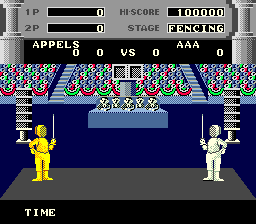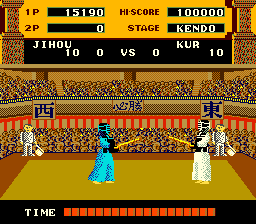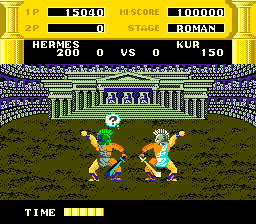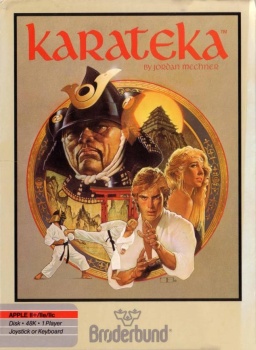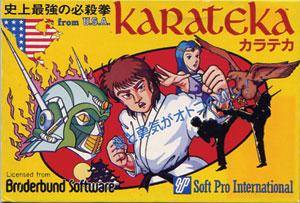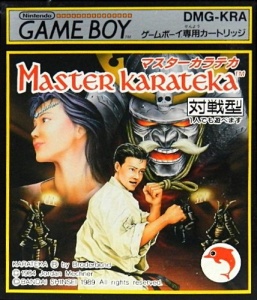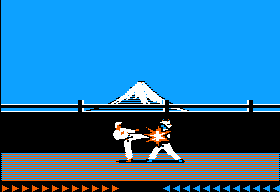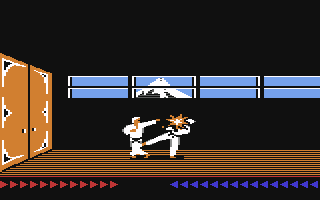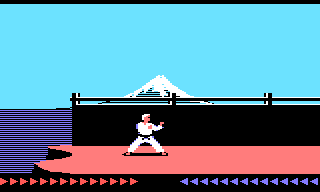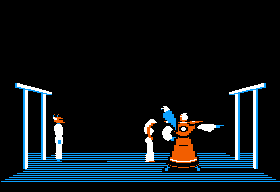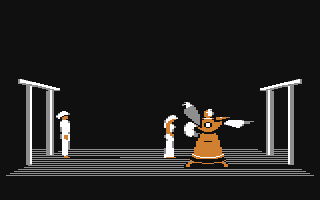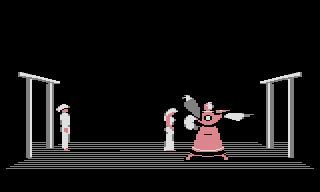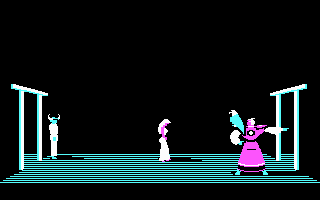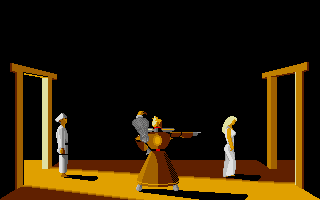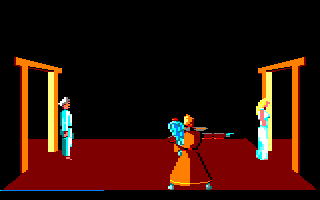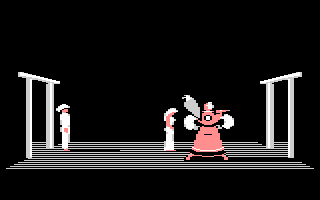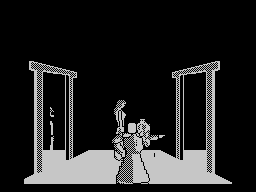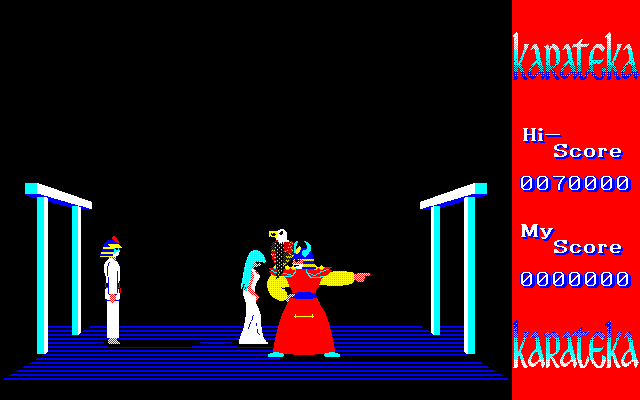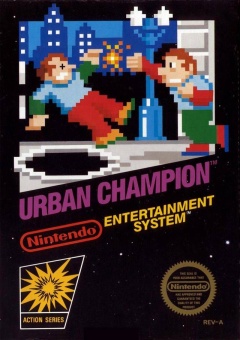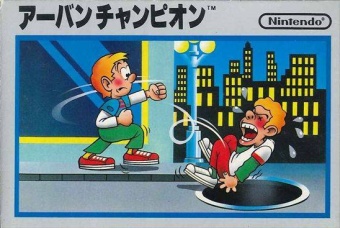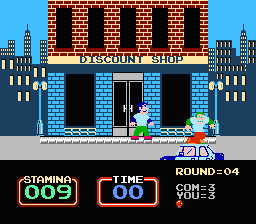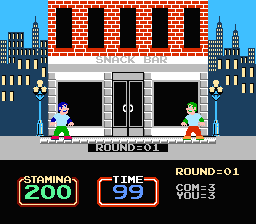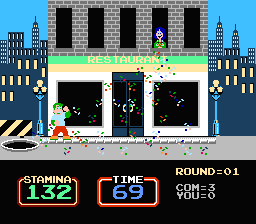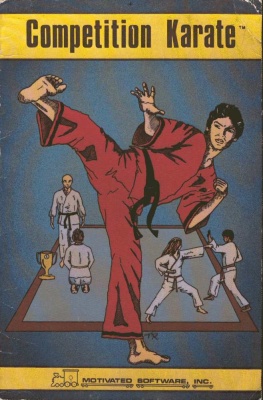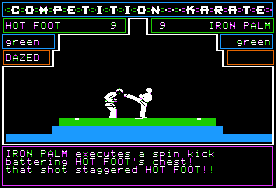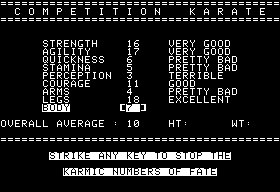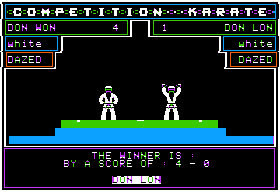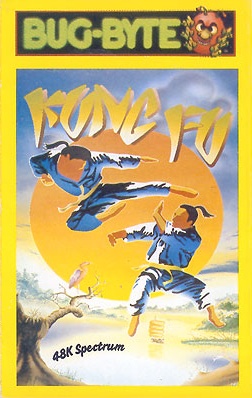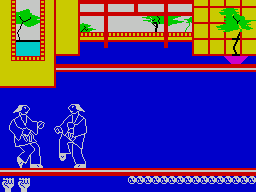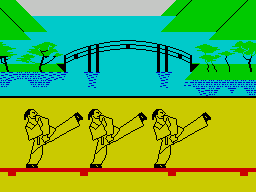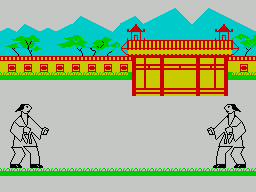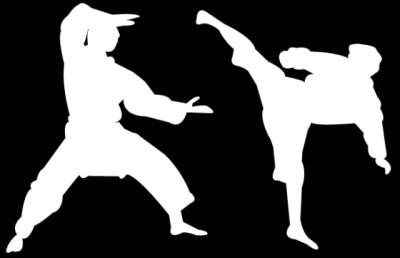
Pre-Street Fighter II Fighting Games
|
Page 1: |
Page 2: |
Page 3: |
Page 4: |
Page 5: |
|
Page 6: |
Page 7: |
Page 8: |
Page 9: |
Page 10: |
|
Page 11: |
Page 12: |
Great Swordsman, Taito's first fighting game, is a sword fighting contest with fifteen levels. The first three are fencing matches. The winner is determined by who is the first to land five hits against the opponent. If both players hit each other at the same time, each gets a point. If the timer reaches zero any player currently standing on the mat will get a point. If a contestant steps off the mat twice during a round, the opponent gains a point as well.
Then comes a round where the player has to deflect arrows, followed by five levels of kendo. These are pretty difficult. The winner is the first to land two hits. Then a second arrow deflecting round. The rules about stepping off the mat, ties, and the timer apply here as well. The last seven matches are gladiator matches. These are really difficult. The first to land a hit wins, as the loser is killed when hit by the opponent's sword. There is no timer, ties do not count, neither does the rule about the mat. After winning these, the game restarts at a faster speed.
There are hit levels and three buttons, each for an attack at a different height. Like in Karate Champ, buttons must be held. If they are released, the character reverts to their standing animation. Attacks can be blocked by intercepting them with one's own weapon.
The real challenge is judging if a strike will land before the opponent's, based on the combatants' positioning. Distance judgement is extremely important here, and timing is decisive. This keeps the gameplay intense, without it having to be a exceptionally fast moving game.
Great Swordsman was included in the Taito Legends compilation for PlayStation 2, Xbox and Windows PCs. These are all straight ports with no enhancements or modifications.
Quick Info:
|
Developer: |
|
|
Publisher: |
|
|
Genre: |
|
|
Themes: |
Great Swordsman (Arcade)
Great Swordsman (Arcade)
Great Swordsman (Arcade)
Karateka / Master Karateka - Apple II, Commodore 64, Atari 8-bit, IBM PC, Atari ST, Amstrad CPC, Atari 7800, Famicom, ZX Spectrum, MSX, Game Boy, iOS, Android (1984)
Karateka was the first game designed by Jordan Mechner, who would later go on to create Prince of Persia. Fans of Prince of Persia will be familiar with Jordan Mechner's movie-like approach to presentation in video games. The music is also what should be expected from a game designed by Jordan Mechner. It is, like Prince of Persia, treated like a film score, and applied more as musical cues, rather than typical video game background music.
Mechner, who was taking karate lessons at the time, originally meant for Karateka to become yet another dry martial arts competition simulation, at one point he also considered renaming it to Black Belt. During a development process that spanned more than two years, which Mechner documented in his journal and published as an ebook, the game took a more adventurous form. The main character is attempting to save a woman named Mariko from the fortress of the evil warlord Akuma. To achieve this, he has to make his way past the villain's henchmen before facing Akuma himself.
Like Prince of Persia, the game's sprites were modeled after photos and videos of the designer's brother moving. This made Karateka the first rotoscoped video game and a technological marvel at the time. The combination of Jordan Mechner's approach to plot structure and musical scoring make for the most movie-like fighting game ever made. Some of the most stunning details to the presentation are the battle cry when combatants enter their fighting stance, and that opponents will bow each time the hero does so, potentially allowing for endless bowing matches. Also, the enemies all wear individual masks. It is also possible to choose a victory pose after a fight.
Gameplay consists of fighting fodder enemy after fodder enemy with a equally generic karate character, who can execute punches and kicks at different heights. Each hit depletes health points that can be regained by resting. While it does have the defining elements of a fighter, Karateka feels more like Prince of Persia without the platforming.
Like with Prince of Persia, the difficulty is maddening. The fights get difficult fairly quickly, and there are elements that are needlessly frustrating. If the protagonist is not in his fighting stance when hit, he will be killed. At one point there is a bird enemy, which is both stupidly difficult and not very enjoyable to fight off (Mechner also wanted to include a fight against a panther, but didn't get around to implement it). The worst part is the damn bridge.
The game was originally released for the Apple II. The Atari 8-bit and Commodore 64 ports are rather faithful and well-executed. The Amstrad CPC, Atari 7800, IBM PC, and ZX Spectrum ports are disasters, with horrid visual downgrading and/or redrawing and poorly responsive controls and/or bad game physics, and are best avoided. The Atari ST port plays horribly as well, despite being rather high end looking. The versions for Nintendo platforms both have the intro removed. The Famicom version replaces the health points with a health bar and the height of attacks is determined by holding a direction. The Japan-exclusive Game Boy port has sluggish controls, but the options to adjust your character's stats and choose your starting level apparently were enough to rename it to Master Karateka.
Besides being a relatively enjoyable game, it is interesting to see the point of origin of the elements that would end up being reworked into Prince of Persia, and especially to see them in one of the earliest fighting games of all places.
Another interesting feature: At the end of the game, the protagonist must be out of his fighting stance before approaching Mariko, or else she kicks him in the face, killing him instantly! If Mariko is such a badass, with her lethal kicking skills, why the hell does she need to be rescued in the first place?
Quick Info:
|
Developer: |
|
|
Publisher: |
|
|
Designer: |
|
|
Genre: |
|
|
Themes: |
Karateka (Apple II)
Karateka (Commodore 64)
Karateka (Atari 8-bit)
Comparison Screenshots
Urban Champion is Nintendo's first foray into the fighting genre. There are similarities to Karate Champ, but it does its own thing. It invented evading, which in this game takes the form of quickly leaning and stepping back. This is performed by holding backwards before the opponent executes an attack. Most importantly, it is the first fighter to have easily controllable, reliable blocking, which is performed by holding up or down before your opponent executes a high or low punch, respectively. It is also the first fighter with dizzies, and the first fighter where matches were decided by something other than health depletion or point totals.
The objective of the game is to knock the opponent out of the screen three times, until he falls into an open manhole. This is accomplished by tapping the A button for a low powered attack or the B button for a high powered attack, which will come out slower. Both attacks can be directed up or down by holding the directional pad at the same time. Occasionally, a cop drives by during a fight. Both fighters then return to their sides of the screen and goofily try to look casual. If they are caught fighting they can be arrested. The character who is not arrested wins the match.
While it does have a 2-player mode, Urban Champion lacks certain conventional elements that are present in many other fighting games even before Street Fighter II: There is no jumping or ducking. There is also no health in a traditional sense. Instead the characters have "stamina," which starts at 200 and is depleted by executing attacks and being hit, either by the opponent or by a flower pot falling from the building in the background. If stamina reaches zero, it will cause a dizzy.
Urban Champion is often referred to as one of the worst games Nintendo has ever made. Given the high quality of their later output, this is not an unfair label. For the time, it wasn't too bad, at least compared to other similar titles. It was also released in the arcades for the vs. system, and has appeared in several re-releases, including the E-Card reader for the Game Boy Advance, the Wii Virtual Console and in the 3D Classics line on 3DS.
Quick Info:
|
Developer: |
|
|
Publisher: |
|
|
Genre: |
|
|
Themes: |
Urban Champion (NES)
Urban Champion (NES)
Urban Champion (NES)
Competition Karate is a unique oddity, as it is more of a strategic simulation than an action game. At first the player has to create one or several karateka by selecting a teacher and dice rolling a number of different stats like in an RPG. The teacher's specialties determine which attributes will be upgraded the most during training, which simply consists of more random increases of stats.
When actually competing in sparring matches or tournaments, the controls are at first very counter-intuitive and off-putting. Instead of controlling the combatants directly, players merely get to chose the next action by a number from 0 to 9 in a turn-based system (the game is actually supposed to be played with paddles, to dial the desired number). One player always has the advantage and can initiate attacks, while the other has to remain in the defense until she somehow manages to turn the tide. This is really hard, especially against an opponent with superior stats. Preserving one's own stamina is key to success. The fight goes over three rounds, after which a winner is declared by score. Warnings for stalling and illegal blows exist, but they are not as decisive as in Black Belt.
Characters go along the usual rank system with colored belts. Once a karateka has reached a certain rank, the option to retire opens up, which makes the character available as a teacher for new students. Motivated Software promised a sequel in the manual, where retired fighters were supposed to go on a martial arts movie style quest, presumably like Fist 2 did later, but that never got made.
Competition Karate was first released for the Apple II, with a Commodore 64 port following not much later. Only the former is currently preserved, though, so not much can be said about version differences.
Quick Info:
|
Developer: |
|
|
Publisher: |
|
|
Designer: |
|
|
Genre: |
|
|
Themes: |
Competition Karate (Apple II)
Competition Karate (Apple II)
Competition Karate (Apple II)
The British Magazine Your Sinclair wrote about Kung Fu on page 26 of its 53th issue:
The first-ever beat-em-up, the father of them all, the seed from which all future offerings stemmed forth, and of which all others are but pale imitations, was none other than Kung Fu, from a long-forgotten label called Bug-Byte.
Well, of course that's not quite accurate, but it was the first hand-to-hand martial arts game on the ZX Spectrum. Surprisingly, though, it was not made in the UK, where the computer was at home, but by two guys from Yugoslavia, who even appeared in a making of on TV and seem to have somewhat of a scene legend status in their home country.
The game is another refreshing diversion from the usual karate fixation, and paints some pretty Chinese-themed backgrounds. The vector fighters move very fluidly, and if their limbs collide with each other, their moves are cancelled making matches feel dynamic even though the pacing is rather slow, there are only four different attacks and no jumping.
In single player mode, the opponent's life is represented by a row of yin-yang signs, while the player's constitution can only be vaguely guessed from the color of the fist symbolizing the current try. There are, however, mysterious conditions that can cause a fighter to get knocked down prematurely. The same fight is repeated over and over again, with a score counter displayed in between matches. In two-player mode, there is no indicator for health at all. Like Swordfight at Midnight, Kung Fu offers the option to watch a replay after each fight.
Quick Info:
|
Publisher: |
|
|
Designer: |
|
|
Genre: |
|
|
Themes: |
Kung Fu (ZX Spectrum)
Kung Fu (ZX Spectrum)
Kung Fu (ZX Spectrum)
|
Page 1: |
Page 2: |
Page 3: |
Page 4: |
Page 5: |
|
Page 6: |
Page 7: |
Page 8: |
Page 9: |
Page 10: |
|
Page 11: |
Page 12: |

